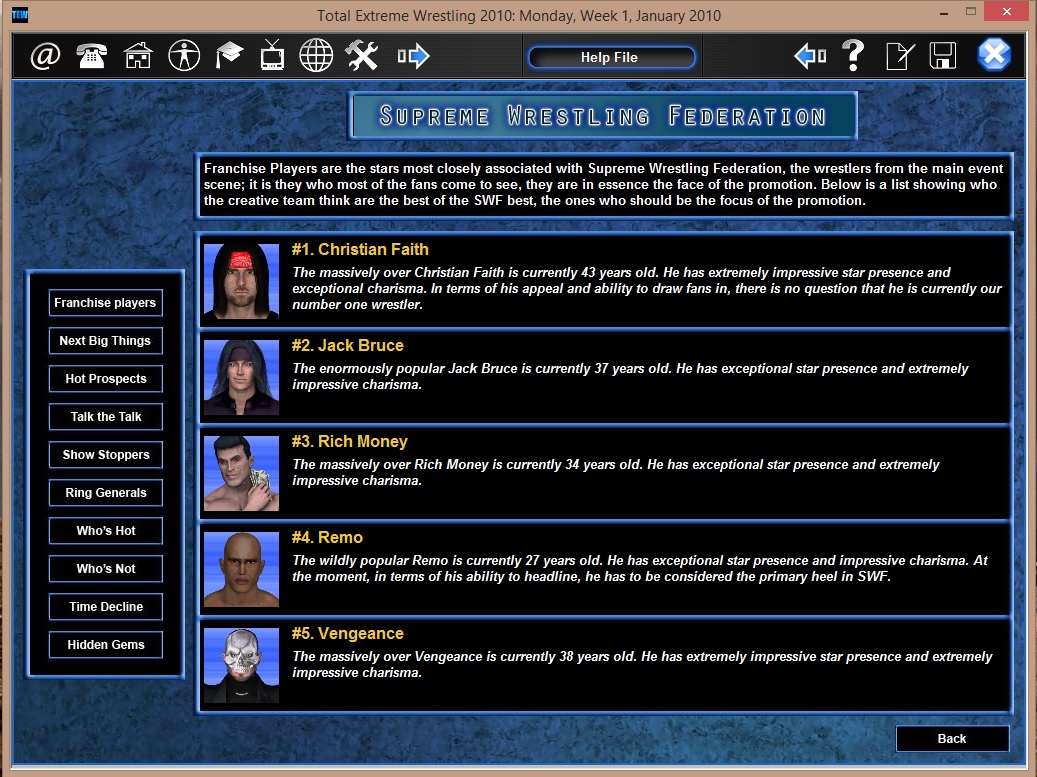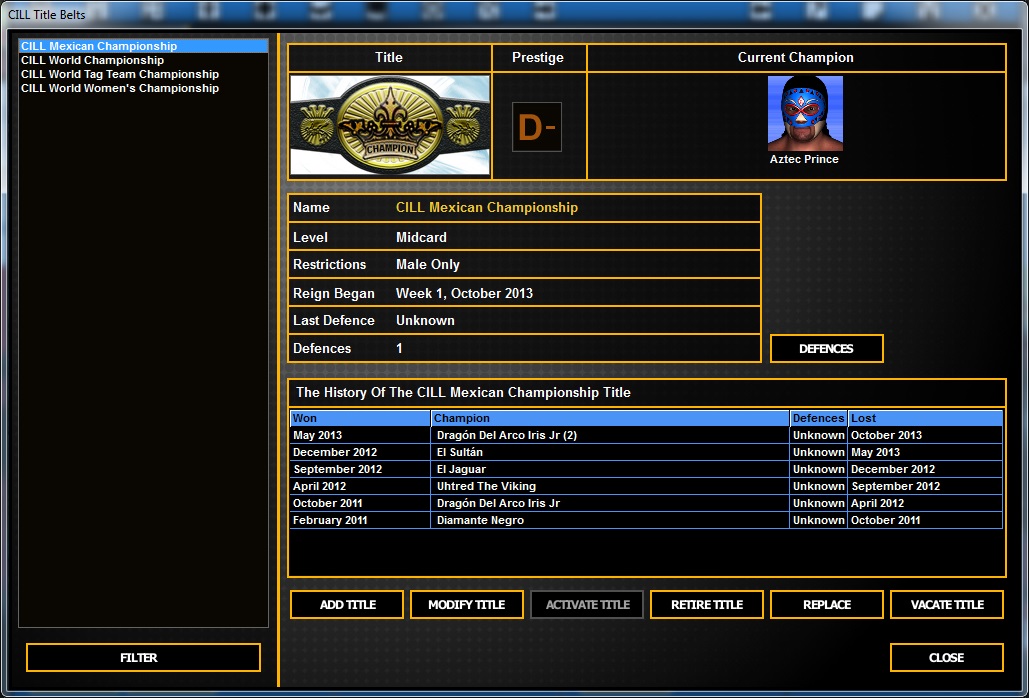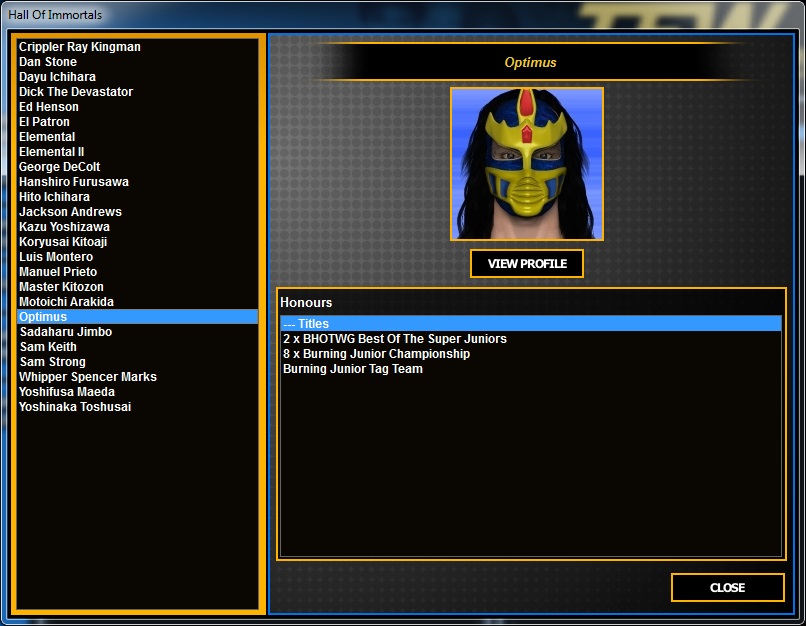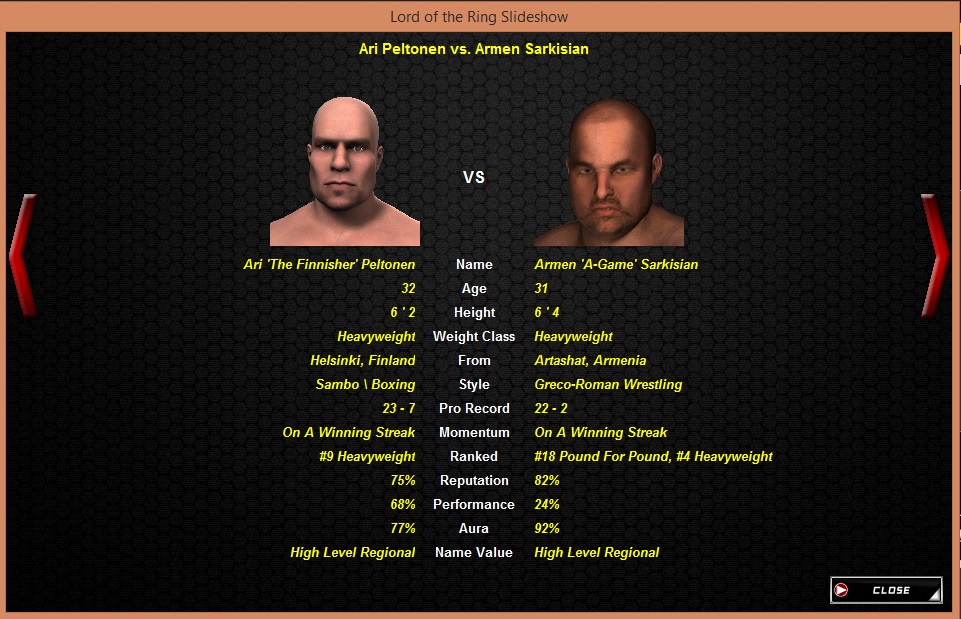For over 20 years, these obscure wrestling sims have been taking players behind the scenes
Indie dev Adam Ryland has made wrestling management sims since the late 1990s, and he's got MMA covered too.

Professional wrestling is a bit like Santa Claus, in that when you're young you believe in all the magic but when you grow up you realize it's all lies. But unlike finding out Saint Nicholas is a sham, which crushes you and forever scars your sense of wonder, finding out wrestling is all choreography and theatrics actually unlocks a whole other dimension to what makes it exciting.
Knowing it's pre-determined allows you to really engage with how much goes into putting on a good show, from the performers to the storylines and everything in between. You can see the athleticism that makes up the big spots, the sense of character and delivery in a great promo, and the deft narrative hand that drives a compelling and nuanced rivalry.
Wrestling videogames have often been aimed toward the younger fans and focused on the in-ring action and backstage antics as they'd be shown on an episode of WWE. Almost none of them skew toward the older audience who know how the medium works and for whom the real fantasy would be operating a promotion of their own.
The Extreme Warfare games felt purpose-made for the more discerning fan, and the fact they were free allowed them to spread far and wide.
Almost none. One series has, over the last 20 years and multiple iterations, become the de-facto wrestling management sim: Total Extreme Wrestling.
Created by Adam Ryland, it's a wrestling game that places players in control of their own federation. Entirely menu-based, Total Extreme Wrestling involves managing every aspect of a wrestling company, from writing and booking storylines to hiring and firing staff. You negotiate TV deals, handle press, schedule tours, and micro-manage your roster's gimmicks to make sure everyone's happy and comfortable.
And just like some of the biggest stars in pro wrestling history, its existence was a happy accident. "It was originally just something for me to practice programming with, then I did it as an A-level project at college," Ryland tells me. "I put it online for a few friends and it ended up becoming huge. There was never any plan for it to become a major game or to lead anywhere."

Originally called Extreme Warfare, the game spread quickly among the forums and message boards of the mid-to-late-90s. At that point it was really just selecting match winners along with some accounting elements but, though it was basic, fans responded to this alternative take on what a wrestling game could be. Gradually the series grew, developing a more comprehensive representation of the wrestling landscape and greater mechanical depth.
The biggest gaming news, reviews and hardware deals
Keep up to date with the most important stories and the best deals, as picked by the PC Gamer team.
Players could soon work on the popularity of wrestlers, individual contract negotiations and feuds, and plan a calendar of different sized events to further emulate the differing capacities companies can operate in, all with the tongue-in-cheek humor of the industry and its audience. The Extreme Warfare games felt purpose-made for the more discerning fan, and the fact they were free allowed them to spread far and wide.
...the wrestling industry is often very unpredictable, and programming all the ways it can disobey logic has been a constant concern.
From 1995 to 2003, Ryland kept Extreme Warfare updated more-or-less by himself, keeping up with player queries and patching as needed while he worked a day job. Then he was scouted by Grey Dog Studio, at the time named .400 Software, to turn the game into a full-time gig. "There were a lot of fans talking about Extreme Warfare Revenge [the 2002 release] on their forums which got their attention, and as my games fit perfectly with their existing product line and branding they got in touch and asked me if I'd like to join," he explains. "The timing was perfect as I had been working as an editor and the company I was employed by had literally just gone bust a few weeks earlier, so it was a case of the right opportunity at the right time."
This allowed the series to really expand and explore its potential, starting with Total Extreme Wrestling 2005, the first installment under the Grey Dog banner. Also the first to be a paid-for product, all real-life names and likenesses were replaced with pseudonyms, like the Pro Evolution Soccer series. An editor was added so players could create their own mods (and to offset the disgruntlement at the built-in data no longer reflecting real wrestlers).

Major territories outside America were now playable, such as Japan, Mexico and the UK, match read-outs increased and the AI for rival promotions became more robust, making campaigns more competitive and intricate. But with all this new information came a recurring problem: the wrestling industry is often very unpredictable, and programming all the ways it can disobey logic has been a constant concern.
Characters' career arcs can be a problem for the simulation. "Wrestlers on tiny local shows may be working for free, or no more than a few dollars, whereas you've got guys making huge amounts of money on the big shows," He said. "Unlike real sports, where you'd have a huge gulf between the two, there's not really that sort of split in wrestling—guys can go from wrestling in bingo halls to being major players in a very short space of time. So that sort of scaling is a real issue and is something that has to involve a lot of workarounds and compromises to simulate in any way."
As you might imagine, working on a single venture like this for two decades can be draining, so Ryland decided to turn his hand to something slightly different. The World of Mixed Martial Arts series used the same skeleton as its wrestling counter-part, just modified for the ins and outs of professional mixed martial arts. It favored more straight simulation, since the competitors succeed more on skill, and there's an added emphasis on what happens in each individual fight.

Working on this new series allowed Adam to stretch muscles he hadn't worked on as much previously. That in turn improved his games as a whole. "I definitely think that one of the reasons that the TEW series has taken a big leap forward is precisely because WMMA came along and shook things up for me," He says. "Doing the WMMA fight engine is actually one of my favorite things, as it's a much more pure simulation task than TEW, and that's where my personal preference lies."
Despite having two successful, ongoing series under his belt that have conquered their own niches and a career that's lasted longer than most studios, Adam doesn't have a lot to say about how he's managed to remain an indie developer for so long. He's largely kept busy by the demands of Grey Dog and their audience, unaffected by wider trends in the videogame industry.
That said, the one piece of advice he can give for anyone planning on taking on a long-term project like Total Extreme Wrestling is to remember the importance of evolution.
"People always talk about the 'Madden effect' when some games do an annual update where nothing really changes other than a roster update," he says, "and I think the fact that we've done the exact opposite and always looked to make each iteration significantly better than the previous has helped keep people interested and engaged."

